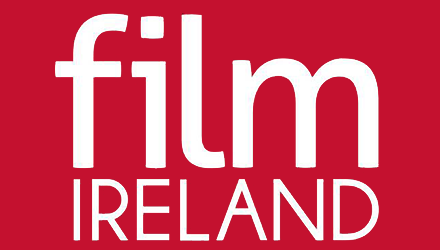Ciara Creedon reviews an Irish-Belgian co-production adaptation of fantasy author Catherine S McMullen’s haunting, visionary drama.
The Other Lamb is an Irish-Belgian co-production, written by Catherine S. McMullen and helmed by Polish director Małgorzata Szumowska. Selected for the Closing Night Gala of the 64th Cork Film Festival, it stars Raffey Cassidy as Selah, a teenage girl who has grown-up in a repressive, all-female cult referred to as the Flock. The cult members follow a man known as the Shepherd, their Charles Manson-esque messiah played by Michiel Huisman. As Selah reaches the cusp of womanhood, she begins to question her faith and her future role in the Flock.
The cult resides in a remote countryside location, and the depiction of the women’s everyday lives clearly takes inspiration from the world of Margaret Atwood’s The Handmaid’s Tale. The Shepherd’s Wives all dress in red while the Daughters dress in royal blue. They are completely subservient to the Shepherd, all vying to be granted his “grace”, with the Wives’ bodies completely at his disposal. The Shepherd warns his followers about the rot of the outside world, full of “broken things” that they must stay away from. At the beginning of the film Selah is his most devoted daughter, one of his favourites due to her beauty as well as the fact that she has yet to get her period, which the Shepherd is disgusted by and describes as punishment for “Eve’s sin”. However, Selah becomes increasingly disillusioned with the Shepherd’s dogmatic regime, spurred on in part by the relationship she forms with the Shepherd’s former favourite and cult-outcast, Sarah (played skilfully by Denise Gough). Sarah reveals that the Shepherd was partly responsible for Selah’s mother’s death, and that he is not all-knowing and all-powerful but a cruel, fickle false prophet. Selah begins to have disturbing, grotesque visions as her doubts grow. When the police pay a visit to the Flock’s settlement, the Shepherd informs his followers that they must find a new home, and the journey proves to test the women’s belief like never before.
The most remarkable aspect of The Other Lamb is its cinematography. The film is visually stunning, shot entirely in Wicklow. The shots of the landscape are breath-taking, featuring sequences at Powerscourt Waterfall as well as Lough Tay, which the Shepherd describes as “paradise on earth”. The royal blue and crimson costumes worn by the cult members are striking against the de-saturated grey-green of the Irish countryside. The performances are strong all-round too. Raffey Cassidy does a stellar job as a teenage girl questioning the world around her and gaining confidence in her own strength – a lot of the shots rely on Cassidy’s ability to convey myriad emotions through facial expression alone. Michiel Huisman does a fine job too as smarmy cult leader, intent on taking advantage of vulnerable women. The film’s score, composed by Paweł Mykietyn, is minimalist but powerful and fitting. The film features many haunting acapella performances of folk songs by the cult members such as “Babes in the Wood” and “Down to the Valley to Pray”, as well as one pop song that fits surprisingly well – ‘The Last Goodbye’ by indie rock band The Kills.
The film has its flaws, particularly its slow and somewhat uneven pace. The symbolism can be quite heavy-handed too. The Flock own a literal flock of sheep from which they take literal sacrificial lambs. In one scene it is made clear that the Shepherd doesn’t want any male members in the Flock, and Sarah emphasises to Selah that there is only room for “one ram”. Driving this point home to the audience, the Flock own one actual ram whom Selah has frequent stares-off with, reflecting her growing distrust of the Shepherd. These points aside however, the film is an enjoyable and thought-provoking watch. Selah’s transformation from devout follower of a patriarch to a leader in her own right is explored very well, as well as the power of embracing female rage rather than shying away from it. The importance of having control over your own narrative is emphasised too; the Shepherd makes it clear that he is the only one allowed to tell stories, but Selah defies this and tells a story of her own. The final shot of the film will stay with you for a long time after viewing. The film is worth seeing for how beautiful the shots are alone, but it also explores Selah’s coming-of-age and the dismantling of a patriarchal community in a captivating way.
The Other Lamb screened on Sun, 17th Nov 2019 @ the 2019 Cork Film Festival (7 – 17 November).






3 Comments
Pingback: 'The Other Lamb' at the 64th Cork Film Festival 2019 | A Blog of One’s Own
Pingback: “The end is in the beginning and yet you go on” – Blog Portfolio | A Blog of One’s Own
Pingback: Reviews of Irish Film @ Cork Film Festival 2019 - Film Ireland Magazine